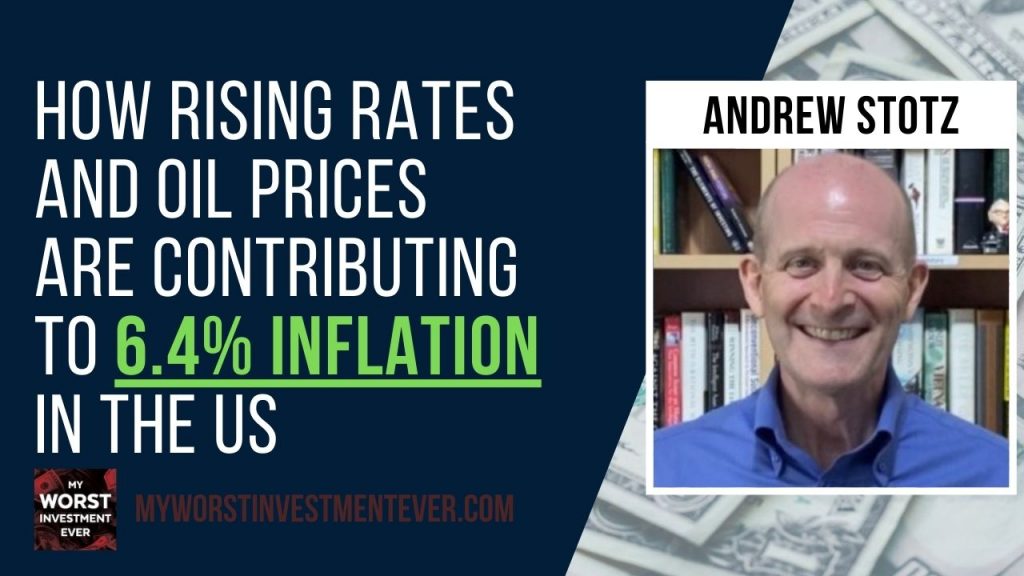ISMS 5: How Rising Rates and Oil Prices Are Contributing to 6.4% Inflation in the US

Listen on
Apple | Google | Spotify | YouTube | Other
How rising rates and oil prices are contributing to 6.4% inflation in the US
Click here to get the PDF with all charts and graphs
What do you think: Are we headed for a recession or has the Fed engineered a soft landing?
- Jan. US CPI was up 6.4% YoY, continuing its slide from the June 2022 9.1% YoY peak, driven by high food and energy-related products
- Food was up 10.1% YoY but continued its 5th straight month of slowdown, driven by food consumed at home was up 11.3%
- The energy component of CPI rose 8.7% YoY; Oil was $100/bbl in Jul-2022; it’s now down to $80bbl. Oil price is the driver; however, energy commodities prices were up only 2.8%, thanks to a slower oil and gas price rise
- All other items excluding food and energy never rose as much and are coming down more slowly. This group benefited from negative used vehicle prices, but shelter costs keep it high
- Over the long term, energy, despite its small weight in CPI, drives consumer prices
- Putin’s invasion of Ukraine was not the primary driver of inflation; instead, it was the oil and gas price rise in 2021 when post gov’t lockdown demand bounced back
- Home prices rose massively thanks to Fed’s nearly-free money, and soon could start contracting
- The oil price fell 6.1% YoY in Jan, down from its Jun-22 high rise of 60.8%; disinflation is in full swing
- Home prices continued slowing from the July 2021 peak YoY change of 18%
Key points
- Jan. US CPI was up 6.4% YoY, continuing its fall from its 9.1% peak in June 2022
- The 6.4% level was kept high mainly by high food and energy prices
- It was a slight YoY slowdown compared to Dec-22, which was 6.5%
- Food was up 10.1% YoY but continued its 5th straight month of decline
- Food peaked in Aug-22 at 11.4%
- The 10.1% food price rise was driven by food consumed at home which was up 11.3%
- Though oil price has fallen, prior oil price shocks are still feeding into the food supply chain
- In addition, food supply chains seemed to still be damaged by the US gov’t economy lockdown
- Energy component of CPI rose 8.7% YoY, Oil was $100/bbl in Jul-2022, now at $80bbl
- When you smooth price changes with a 12mma you see that oil price is the driver
- Energy commodities prices were up only 2.8%, thanks to a slower oil and gas price rise
- Energy services were up 15.6%, driven by the prior oil price spikes feeding through
- All other items didn’t rise as much and are coming down more slowly
- This component of CPI is slow to adjust
- This is why a few months ago, when I last looked at US inflation, I mentioned that inflation was unlikely to come crashing down
- Ex-food and energy items benefited from fall in used vehicle prices; shelter remains high
- Price rises were low for Apparel (3.1%), New vehicles (5.8%), Used cars and trucks (Negative 11.6%), and Medical care commodities (3.4%)
- Energy, despite its small weight in CPI, seems to always drive consumer prices
- Did Putin’s invasion of Ukraine drive inflation?
- Oil and gas prices started their rise in 2021 when post gov’t lockdown demand kicked on
- Home prices rose massively thanks to Fed’s nearly-free money, now falling to neg?
- Oil price has already moved to negative, it looks like disinflation is in full swing
- The 2007 YoY housing price increase maxed at 10%; it peaked at 19% in July 2021
Click here to get the PDF with all charts and graphs
Andrew’s books
- How to Start Building Your Wealth Investing in the Stock Market
- My Worst Investment Ever
- 9 Valuation Mistakes and How to Avoid Them
- Transform Your Business with Dr.Deming’s 14 Points
Andrew’s online programs
- Valuation Master Class
- The Become a Better Investor Community
- How to Start Building Your Wealth Investing in the Stock Market
- Finance Made Ridiculously Simple
- FVMR Investing: Quantamental Investing Across the World
- Become a Great Presenter and Increase Your Influence
- Transform Your Business with Dr. Deming’s 14 Points
- Achieve Your Goals

